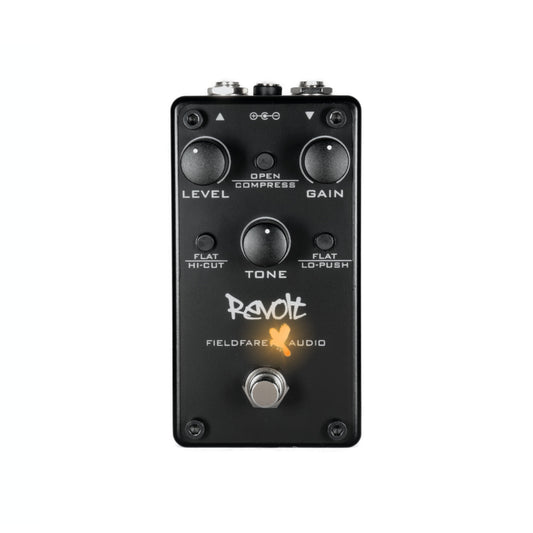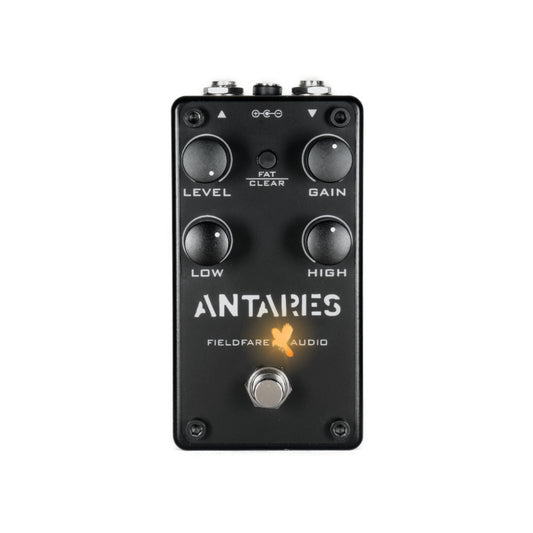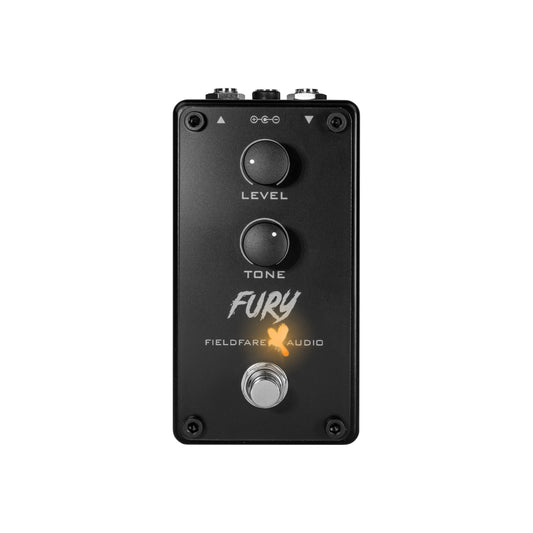
Effects pedal for beginners: Which ones you really need (and why)
Share
Effect pedals for beginners – which ones you really need (and which ones you don't)
Entering the world of effects pedals is a real milestone for many guitarists. Suddenly, a whole universe of sounds opens up: overdrive pedals , distortion pedals , delay , reverb , modulation—not to mention multi-effects pedals and classic single pedals. But which guitar effects pedals do you really need to get started? And how do you put together your first pedalboard setup for beginners ?
In this guide, you'll learn which guitar effects pedals are really useful, what the difference is between an overdrive pedal and a distortion pedal , and why quality counts more than quantity when choosing your first guitar pedal .
Effect pedals explained – what they do and why they are important
An effects pedal modifies your guitar signal before it reaches the amplifier. It can distort, delay, modulate, or add dimension. Essentially, you shape your own sound with pedals.
Beginners benefit from using guitar effects because they learn how gain, frequencies, and dynamics affect the sound. Simple overdrive pedals are particularly useful because they distort the sound more naturally and dynamically—ideal for practicing and learning.
Which effects pedals do you need as a beginner?
1. Overdrive Pedal – the introduction to distortion
The overdrive pedal is the heart of many legendary sounds. It simulates the warm, natural overdrive of an overdriven tube amp.
- Ideal for blues, rock and pop
- Reacts to your keystroke dynamics
- Sounds lively even at low volumes
➡️ Recommended: Boutique overdrives like the Antares Overdrive or the Revolt Overdrive Screamer offer high-quality, handcrafted alternatives to mass-produced products – perfect for beginners who want to invest for the long term.
2. Distortion Pedal – for more gain and power
A distortion pedal offers more aggressive distortion and more compression. Ideal for harder styles like rock, punk, or metal. Here, too, it's better to get one good, simple pedal than many cheap ones. This way, you'll learn the difference between overdrive, crunch, and high gain.
3. Tuner – the underrated effects device
Not a spectacular effect, but indispensable. A pedal tuner ensures clean tuning and can mute the signal while tuning. This is a real game-changer, especially for beginners, and no pedalboard should be without it.
4. Reverb & Delay – Space and Depth
Once you've found your distortion sound, reverb and delay pedals come into play.
- Reverb Pedal: Simulates rooms, reverb and atmosphere.
- Delay Pedal: Repeats your signal rhythmically – perfect for solos and ambient sounds.
Both effects add depth to the sound and help you practice dynamics and timing. If you want to try out several sounds at once, you can also use a multi-effects pedal to get acquainted with different guitar effects devices .
5. Multi-effect pedal or individual pedals?
A common question for beginners: Multi-effect pedals vs. single pedals – which is better?
- A multi-effects pedal for beginners (e.g. Boss, Zoom or Line 6 Pod Go) offers many sounds in a small space – ideal for experimentation.
- Individual pedals are clearer and better convey how signal flow and dynamics work.
If you want to understand guitar effects , the path to individual pedals is usually more instructive. However, if you want everything in one, you can get started with an inexpensive multi-effects pedal .
Effect pedal order explained – Signal chain for beginners
The correct order of your guitar effects pedals has a huge impact on your sound. A simple effects pedal order for beginners looks like this:
- Tuner (always first)
- Overdrive / Distortion Pedal
- Modulation effects (chorus, phaser, flanger)
- Delay / Reverb (always at the end)
This sequence ensures a clean, dynamic signal – perfect for building your first pedalboard setup for beginners .
Analog or digital – which is better for beginners?
A traditional analog effects pedal responds more directly and often sounds more organic. Digital effects, on the other hand, offer more variety and presets.
- Analog: Authentic, warm, direct.
- Digital: Flexible, versatile, perfect for experimentation.
Beginners in particular often benefit from digital multi-effect pedals because they can test many sounds before deciding on their favorite pedals.
Buyer's Guide: Which Effect Pedals Are Really Necessary?
When putting together your first effects pedal starter set , start with three essentials:
- Overdrive or distortion pedal – e.g. B. Revolt Overdrive Screamer or Antares Overdrive
- Tuner Pedal
- Delay or reverb pedal
Everything else can be added later. This way, you'll learn step by step how each pedal works—and avoid sound chaos.
Tip: Pay attention to quality. A good pedal will last you for years. Models like the Antares Overdrive or the Antiheld Bass Distortion demonstrate that handcrafted boutique pedals can be the best investment, even for beginners.
Conclusion – the best effects pedals for beginners
A strong setup for beginners consists of:
- Overdrive pedal – for dynamics & feeling
- Tuner – for clean intonation
- Delay or reverb – for space & depth
Everything else comes with experience. Whether you choose individual pedals or a multi-effects pedal for beginners depends on how deeply you want to delve into sound design.
Important: Understand the basics, try out different guitar pedals , and find the sound that inspires you. Quality, not quantity, is the best way to start in the world of the best effects pedals .








